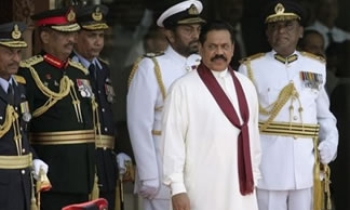The oblong table at The Times of India’s building in Mumbai had just enough seats to accommodate the INMA Board of Directors — mostly populated by members from North America, Europe, Latin America, and the South Pacific. The Board was in Mumbai for its semi-annual meeting, followed by INMA’s first-ever conference in Asia. It was, truly, a historic week on many fronts.
The Board’s over-arching storyline was plain enough: Circulation is down, advertising is shifting from mass media to niche media, and the only way to show growth is to aggregate eyeballs across media platforms. Retrench. Change the subject. Talk digital.
Around the room’s perimeter sat the top executives of The Times of India who had a very different story to tell. We heard of the:
* Circulation: 56 percent print circulation growth among Indian daily newspapers in the past decade.
* Advertising: Rapid growth in advertising and newspaper market share versus other media, led by pro-active “response departments” (in the 1980s, several leading Indian newspapers began calling their advertising departments by this name).
* Brand: Brand obsession permeating all departments, including editorial, that is yielding new ideas that have never before been tested at newspapers.
The Times of India is not alone in their success. The Hindustan Times, The Hindu, and the Indian Express are long-established quality broadsheets growing as well. Television broadcaster Zee Telefilms has launched the quality broadsheet DNA (Daily News & Analysis) in Mumbai. Mid-Day is attacking the Mumbai market with a mid-market tabloid product. English-language newspapers represent 10 percent of the nearly 500 dailies in India, yet represent 50 percent of newspaper advertising. Having said that, the so-called “language press” such as Rajasthan Patrika and Malayala Manorama are pushing commercial boundaries.
So, how does one explain today’s differences in philosophy and fortune between the Indian newspapers and the newspapers in mature Western markets?
To dispel a fast-spreading myth, I don’t believe Indian newspapers are inherently superior to counterparts worldwide because today’s results are so different. The “denominators” of publishing simply favour India today: growing literacy, growing population, growing mid- to high-end demographics, growing urbanisation, and growing economy. From a growth perspective, India is at a different historic point than other countries worldwide.
Between 2003 and 2004, newspapers in emerging economies worldwide — led by the Indian performance — grew revenue 39 percent versus 4 percent growth in mature economies.
As newspaper executives from mature economies met newspaper executives from an emerging economy across that Times of India meeting table, what was clear to me was that a defensive culture was staring an offensive culture in the face. Neither culture is superior to the other — they simply produce different ideas and innovations:
* Defense: A defensive culture measures success through cost efficiencies, beating lowered expectations, lowering risk management, moving in increments, and calculating market success in alternative methods. The short-term almost always trumps the long-term. It is management through attrition. And the focus is often on efficiency.
* Offense: An offensive culture is more likely to produce big ideas, focus on revenue at the expense of short-term profitability, concentrate on the core business, have a higher risk threshold, and set high benchmarks to which executives can aspire. Expense-side inefficiencies are more common and more tolerated. And the focus is often on effectiveness.
In short, Western newspaper executives anxious to learn how to grow circulation and advertising revenue may find fresher ideas in an offense-minded Indian newspaper culture than their own defense-minded cultures. That is a radical change in mindset and benchmarking behaviour. That requires becoming comfortable with a truly global landscape and adapting local circumstances.
An Indian newspaper executive told me of his interaction with Western counterparts this way: “Newspapers in mature economies are worried about share. Newspapers in India today are worried about space — grabbing as much as we can while the opportunity is here.”
His comment reminded me of a friend who lives in Manhattan describing the hard work and effort it took to extricate an additional 100 square feet of space for her apartment. She spent a lot of effort for an incremental result in an otherwise over-crowded market. By contrast, her great-great grandparents helped conquer the Western frontier of the United States — grabbing and claiming land measured in acres and miles.
The context and the culture to grow are entirely different.
I sensed that Indian newspaper executives are anxious to reach out to counterparts around the world, and INMA is a natural conduit for this. Yet I couldn’t help but wonder: Given the numbers, shouldn’t newspaper executives in the mature markets be reaching out to India?
The “INMA conversation” is about to get richer and more vibrant with the emergence of Indian newspaper executives in the membership network.









